What Hi-Fi? Verdict
The AVR31 is a rarified product, bringing together high-class sound and connectivity features in a sophisticated, premium amplifier
Pros
- +
Sleek build with colour display
- +
Clean open sound
- +
HDMI 2.1 connectivity
Cons
- -
Only seven amplified channels
- -
Dirac Bass control costs extra
Why you can trust What Hi-Fi?
When Arcam announced that it would cascade several features throughout its most recent, carefully curated AVR range, it immediately appealed to that part of us that can’t resist a bargain. No, it's not bargain-priced – but still, knowing that you can buy a more affordable product in a manufacturer’s line-up and still obtain some of the same specs found on the flagship model can be very compelling and persuasive when weighing up which brand to buy from.
What of the inverse, though? It’s wonderful to have high standards and sonic consistency across a range, and such an approach often yields some of the best value AV products we’ve come across. But if you have a bit more cash to spend than most and are looking for a premium home cinema receiver such as the Arcam AVR31, does knowing that it has so much in common with its cheaper siblings lessen its lustre and dampen its draw?
Price
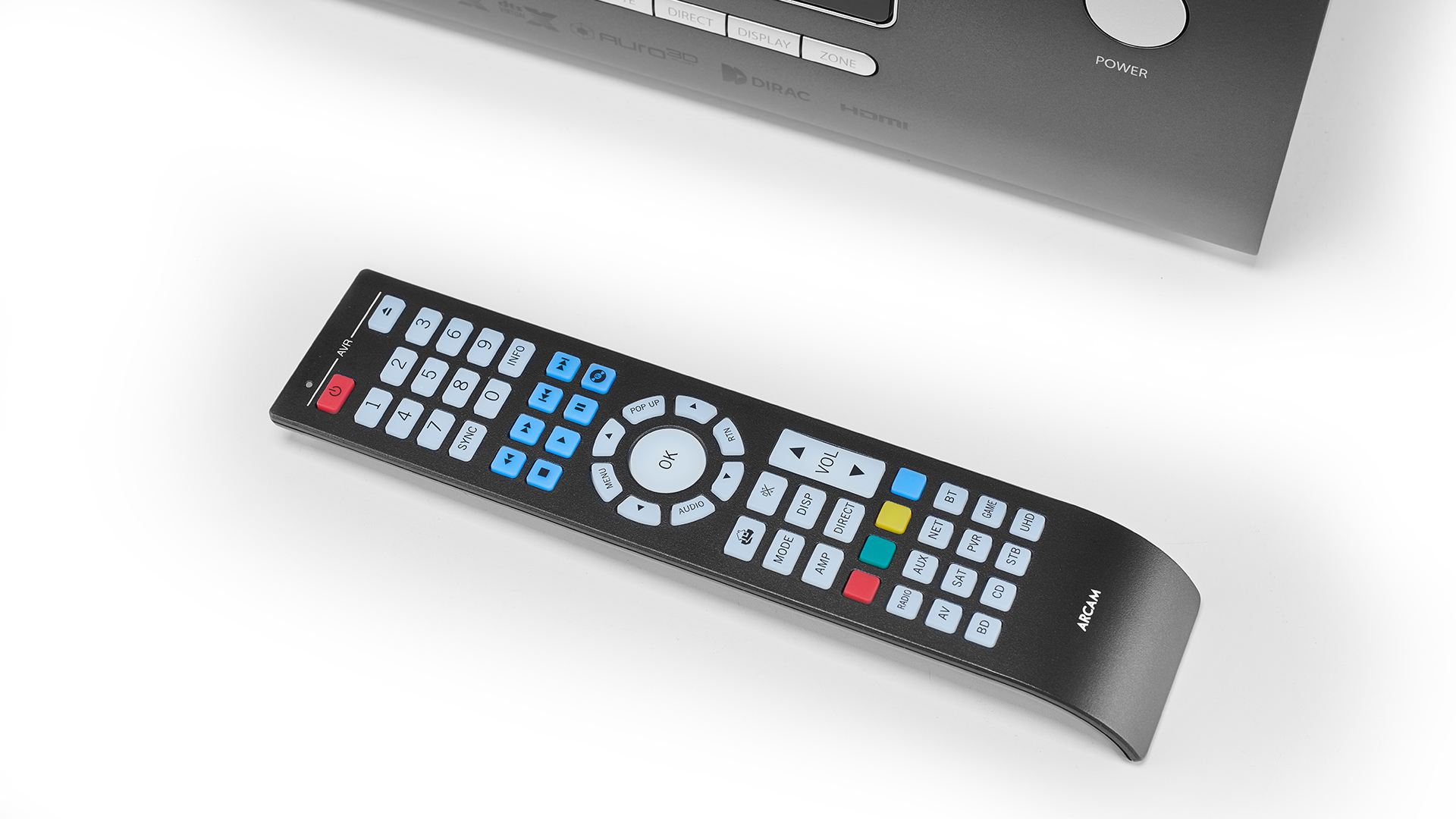
Sitting at the top of Arcam’s four-strong AVR range, the AVR31 is priced at £5799 / $5250 / AU$11,495, though it's already available with a discount at certain retailers. Below it is the AVR21 (£3799 / $4700 / AU$7995), but both models share many features, including the same ESS 9026 Pro DAC as well as having the same capacity for seven channels of power amplification.
The AVR31 is an equivalent model to the What Hi-Fi? Award-winning Synthesis SDR35 (£6000 / $8250 / $14,999) from Arcam’s sister brand, JBL. The SDR35 has a more utilitarian design and custom install-friendly connectivity, but likewise uses much of the same internal circuitry, as well as offering seven channels of power.
This is one of the most notable areas where the AVRs from Arcam, and JBL, differ from the rest of the market, with the likes of Yamaha and Denon offering 11 and 13 channels of power amplification on their flagship home cinema amps. Arcam insists that seven channels are the maximum number that can be delivered without significant concessions compared to the performance of a stereo amplifier, and so adheres to the same number of amplifier outputs across the board. However, with up to 16 channels of decoding, the AVR31 is capable of processing audio for systems up to 9.1.6.
With wide-ranging audio format support, including Dolby Atmos, DTS:X, IMAX Enhanced and Auro-3D, as well as Dolby Virtual Height, DTS Neural:X and DTS Virtual:X for systems without height speakers, the AVR31 is well placed to be enhanced with the addition of a separate power amplifier, for an additional cost. Arcam's own suggested options for this include the PA410 (£1399 / $1650 / AU$2995), which features four channels of AB amplification, and the two-channel PA240 (£2200 / $2750 / AU$3995) and seven-channel PA720 (£2900 / $3300 / AU$5995), both of which also use the same class-G amplifier circuits as the AVR31.
Features & Build
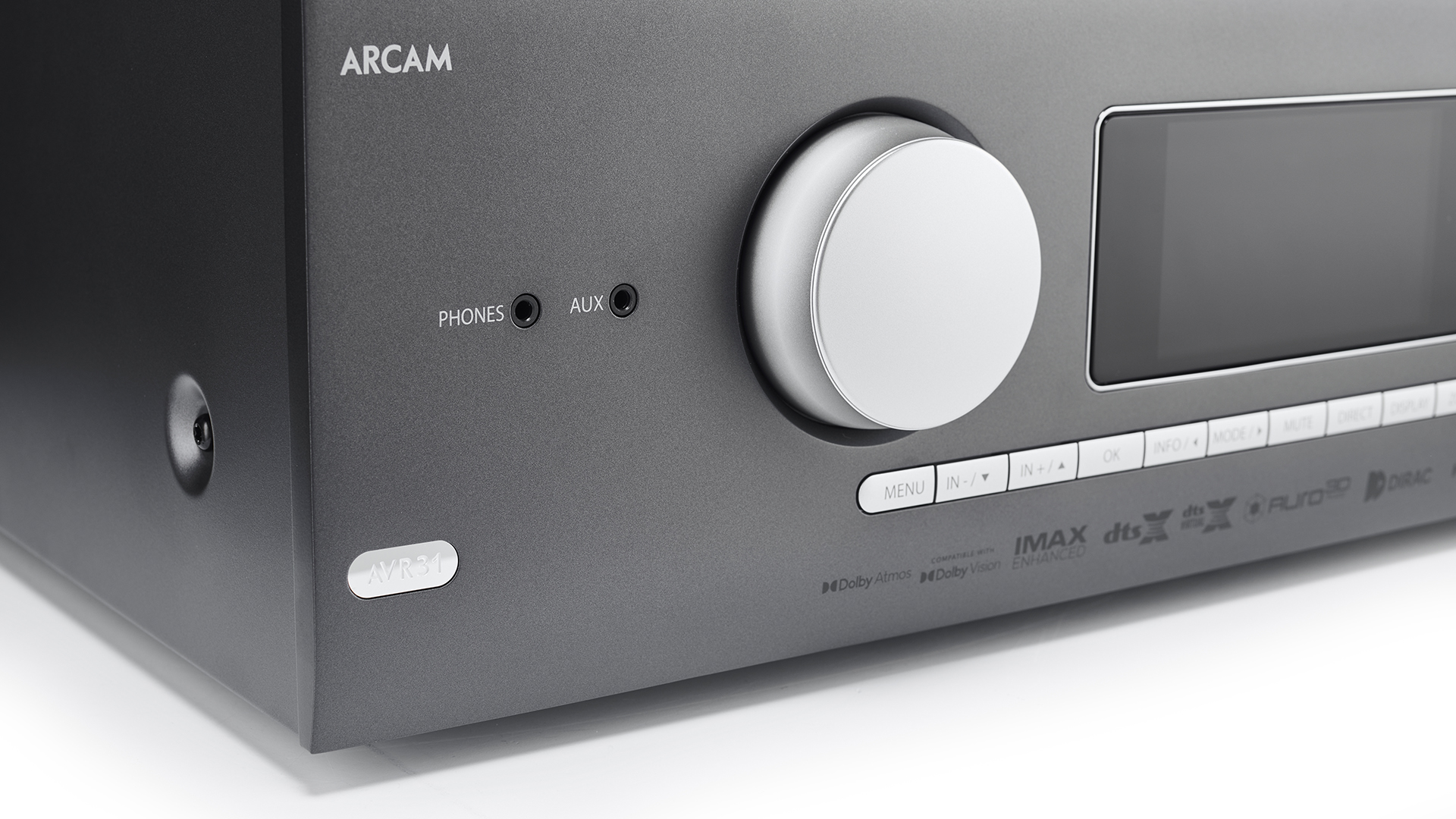
Class G is essentially a variation of A/B amplification that uses voltage rail switching to help maximise the amplifier's efficiency. The AVR31 is the only AV receiver in Arcam’s new line-up that benefits from class-G amplification to deliver a claimed 100W per channel with all channels driven, as well as an over-engineered toroidal transformer to help reduce noise.
Though its number of power amplifier channels may leave something to be desired, there’s nothing lacking about the AVR31’s connectivity spec, with a healthy seven HDMI 2.1 inputs and three outputs. All of these HDMI ports can handle 8K video signals at 60fps and 4K at 120fps with support for VRR, ALLM, Dolby Vision and HDR10+. One of the outputs also supports eARC
Physical connections at the rear also include an array of six digital (four coax, two optical) and six analogue (RCA) audio inputs, as well as optical and analogue outputs and pre-amp outputs. There’s also an aerial connector for an FM/DAB tuner, a USB port and trigger outputs with IR extenders for two zones, along with an RS-232 serial connector and an Ethernet port for wired network connection. Users can also stream content wirelessly using Apple AirPlay 2, Bluetooth aptX HD, Google Chromecast, Spotify Connect, Roon and Tidal Connect.
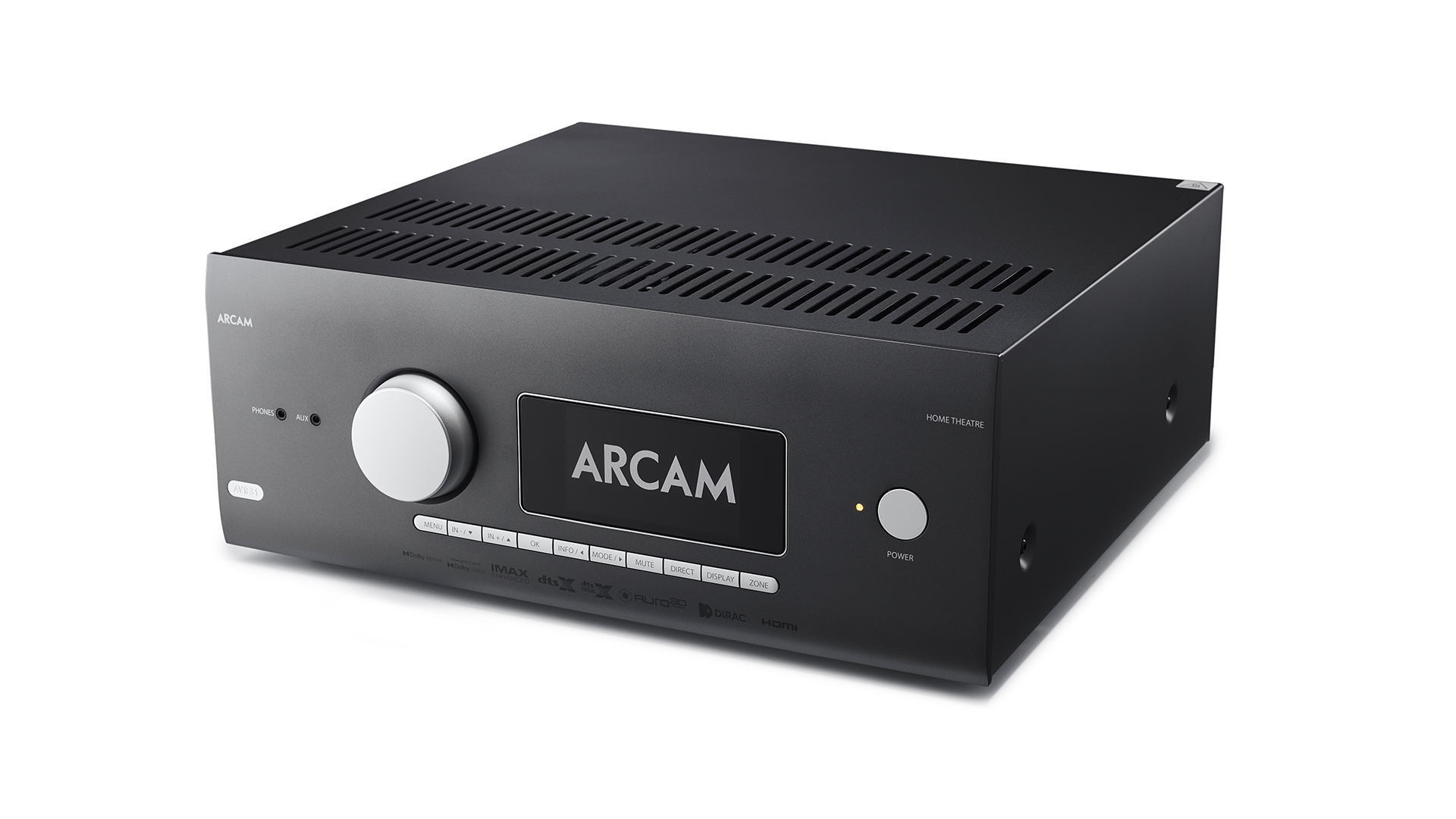
HDMI inputs x7
HDMI outputs x3 (including eARC)
HDMI 2.1? Yes, inc VRR, ALLM
Processing 16 channels
Amplification 7 channels
Power 120W (8 ohms, 20Hz - 20kHz) with two channels driven
HDR formats Dolby Vision, HDR10+, HDR10, HLG
Audio formats Dolby Digital+, Dolby TrueHD, Dolby Atmos, DTS:X, Auro-3D, IMAX Enhanced, Dolby Surround, Dolby Virtual Height, DTS Neural:X, DTS Virtual:X
Streaming Google Chromecast built-in, Apple AirPlay 2, Bluetooth aptX HD, Free MusicLife, supports MQA, Roon Ready, Tidal Connect, Spotify Connect
Voice assistants Google Assistant compatible
When casting to the AVR31, album artwork is displayed on the generous full-colour display. This, along with a sophisticated grey finish, tactile silver volume dial and uncluttered design, lends it the appearance of an oversized streamer. The AVR31 is undoubtedly a product intended to take pride of place in your home cinema room rather than be consigned to a rack somewhere out of the way.
The AVR31 doesn't output a full-screen menu system to the TV or projector to which it's connected, so while you can tweak one setting at a time using the included back-lit remote on your primary video display, for set-up you’ll want a line of sight to the AVR’s front screen or to access the GUI via a phone or laptop on the same network.
This inconvenience is somewhat offset by Arcam offering support for Dirac Live’s advanced room correction software with the AVR31, which the company says delivers "a larger sweet spot, accurate staging, clarity and voice intelligibility". A licence and calibration microphone is included, while upgradable access to Dirac Live Bass Control starts at £333 / $349 / AU$491 for a single subwoofer.
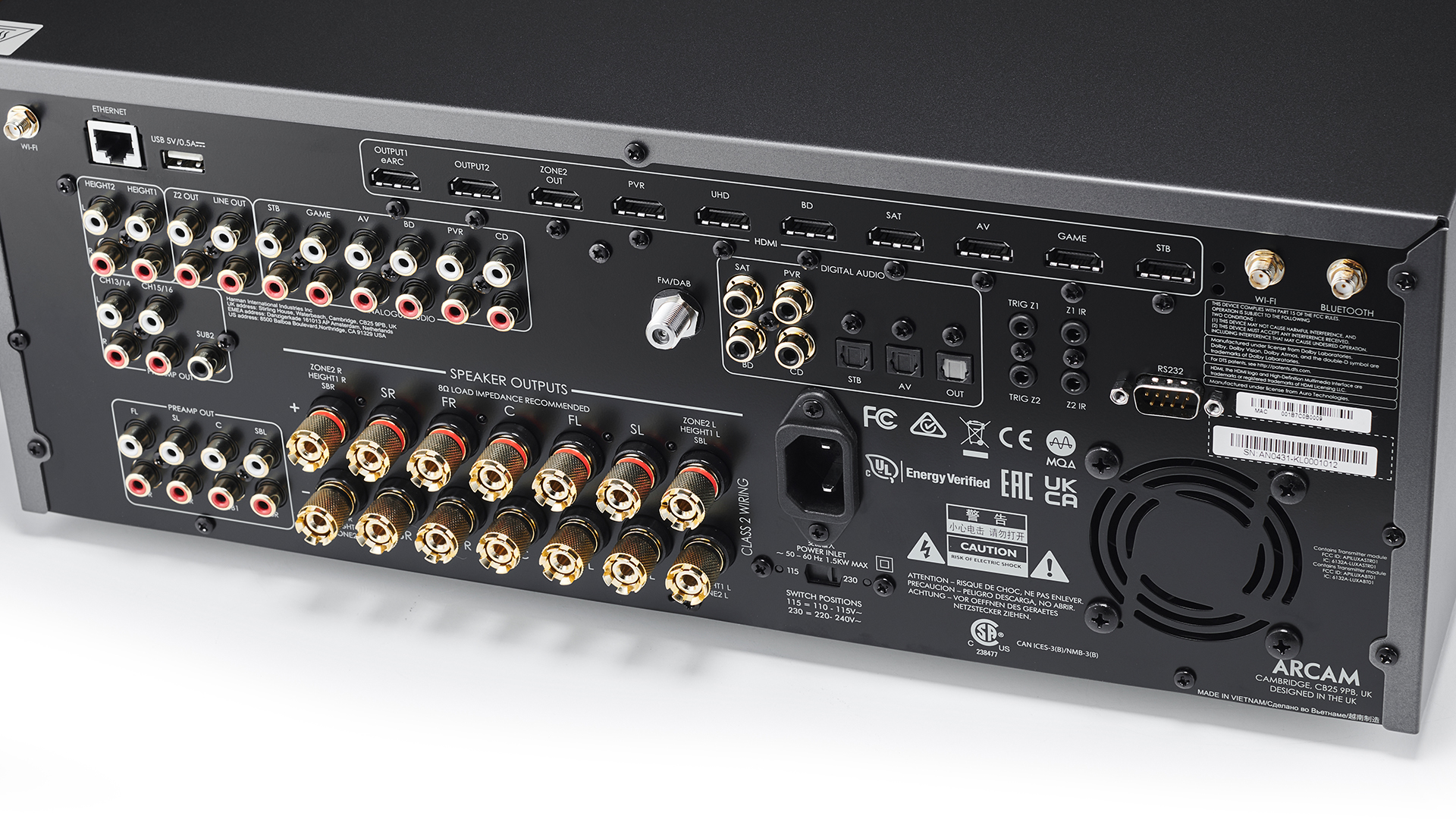
While some other brands use equalisation software to flatten a room's frequency response, Dirac Live prioritises a speaker's impulse response alongside its balance in the room. If you like fine-tuning and getting into the minutiae of response curves, it's a great feature to have onboard, but getting the most out of it requires more than a bit of patience.
We’d expect that most customers purchasing the AVR31 will have set-up performed by a professional installer, but it's worth mentioning that the amp’s main menu does include an internal test tone and options to assign speaker distances, levels, filter slope and crossover points for manual calibration.
Dirac is certainly worth persevering with, however. We try the AVR31 with both Dirac and manual calibration presets. Although the former has slightly less relative volume in direct comparison, once compensated for, there’s noticeably a tighter coherence to the imaging when it's engaged for a large Dolby Atmos system.
Sound
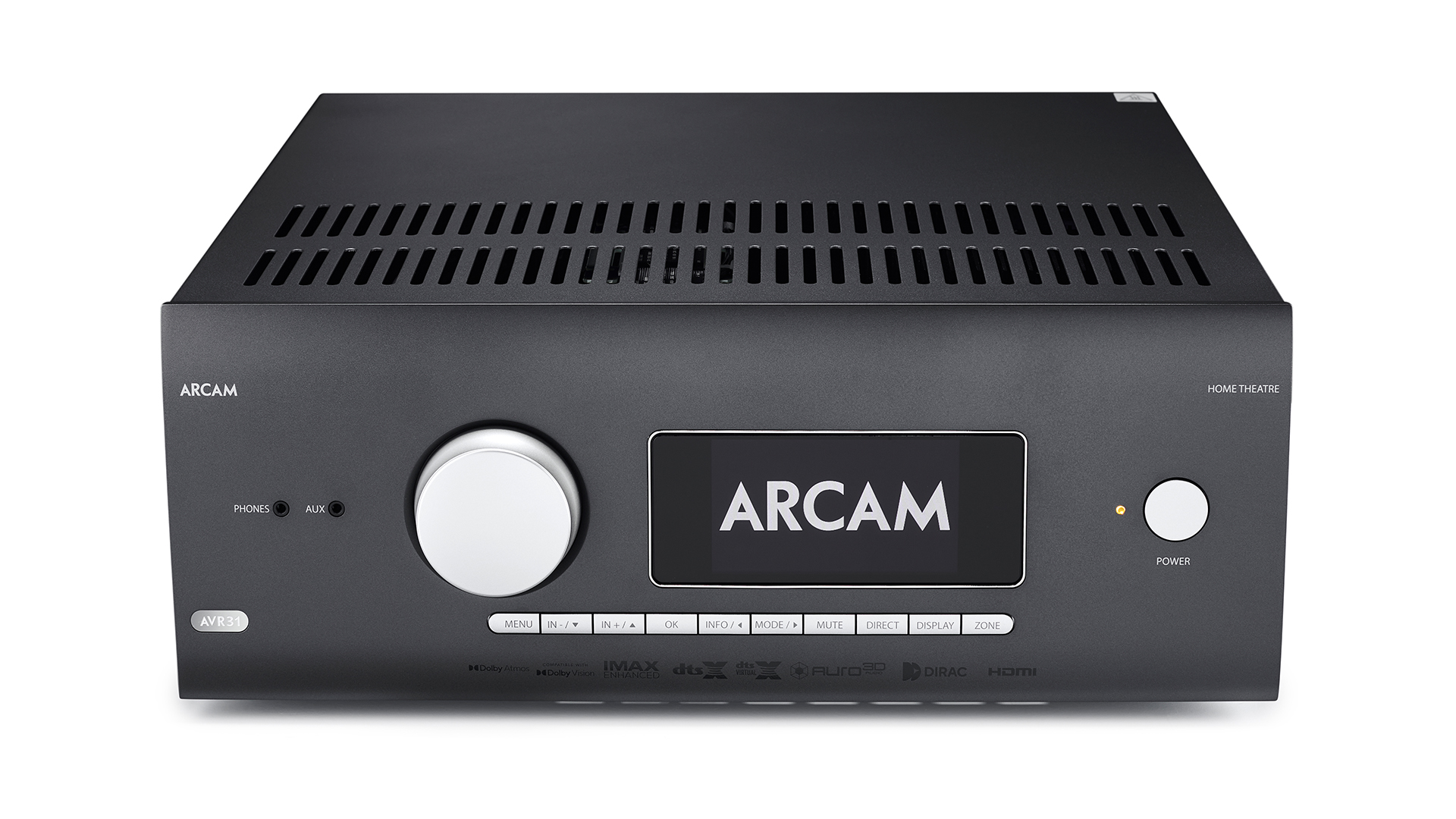
For most of our testing, though, we listen to the AVR31 in its Pure Direct mode and partnered with a 5.2.2 system using speaker toppers as front height drivers, and it's apparent that with or without Dirac tuning, this is an amp that puts in a lustrous performance with a clean, controlled clarity.
Watching No Time To Die on 4K Blu-ray in Atmos, the action-packed chase through Matera has a delicate realism that we aren’t often treated to. Distinct details here can often merge, but the direct impact of the deluge of bullets is seamlessly counterpointed by the sonorous church bells, which have a particularly vertiginous quality, despite the lack of rear-height speakers in our system.
We’ve watched this scene many, many times in our test room. Still, the AVR31 uncovers a nuance and lyricism within the strident score that we hadn’t previously been aware of, particularly in moments where it pares back to carve out space for other elements. Nothing here feels artificially spotlighted; there’s just an appreciable level of refinement, separation and articulation that makes enjoying the breadth of this epic soundscape feel effortless.
Switching to Dune, the AVR31 proves it has the power to pack a punch in the best possible way. There's also a lightness of touch in quiet moments, such as the crystalline squalls of sand that are full of both stillness and movement, which heightens some of the film’s colossal bursts of sound, including when the sandworm first erupts out of the desert.
Here, the creaking of the sand before the earth starts to shift is neatly audible in amongst the growing crescendo, adding to the tension before the climax, in which the orchestra and effects are weighty, clearly defined and well spread with ample space.
The same scene with the What Hi-Fi? Award-winning JBL SDR-35 yields a touch more dynamic depth, most apparent in the low end with a little more energy and control, but the two amps are very close in terms of execution with similar characters despite their different intended audiences.
Streaming music, the AVR31 puts in another fine performance with Echo And The Bunnymen's Never Stop (Discotheque) producing sharp, nimble transients in the introduction’s various arco, legato and pizzicato strings, while the hammering piano and creamy vocal soar across the song's eighties pop edges for a smooth but buoyant and musical sound.
Verdict
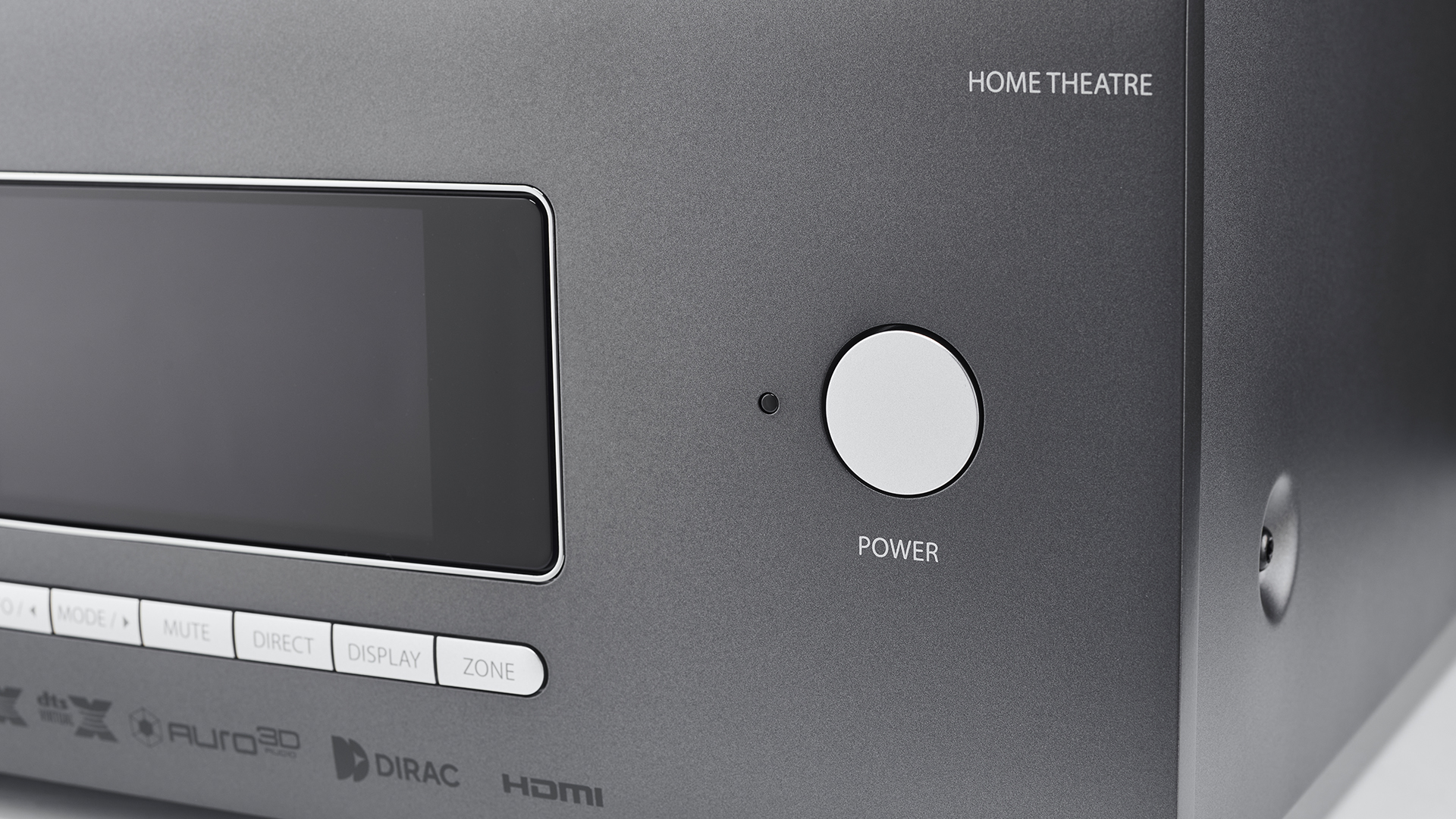
It may share much of its DNA with Arcam’s more affordable AVRs, but the AVR31 is still a cut above. Aside from its restricted number of power amplifier channels, this amp delivers modern AVR functionality, paired with a distinguished hi-fi sound. The only home cinema amp we’d heard that sounds this impressive is its cousin, the JBL SDR-35, which pips the AVR31 with a touch more dynamic depth and grip, but its lack of HDMI 2.1 connectivity will discount it for some.
If future-proofed features are equally as important to you as having the very best sound quality, and your pockets are deep enough, then the AVR31 is an ideal choice to make your home cinema sing.
SCORES
- Sound 5
- Build 5
- Features 5
MORE:
Read our review of the JBL Synthesis SDR-35
Also consider the Yamaha RX-A6A
Read our Denon AVC-X6700H review
Best AV receivers: amazing home cinema amplifiers for every budget
What Hi-Fi?, founded in 1976, is the world's leading independent guide to buying and owning hi-fi and home entertainment products. Our comprehensive tests help you buy the very best for your money, with our advice sections giving you step-by-step information on how to get even more from your music and movies. Everything is tested by our dedicated team of in-house reviewers in our custom-built test rooms in London, Reading and Bath. Our coveted five-star rating and Awards are recognised all over the world as the ultimate seal of approval, so you can buy with absolute confidence.


